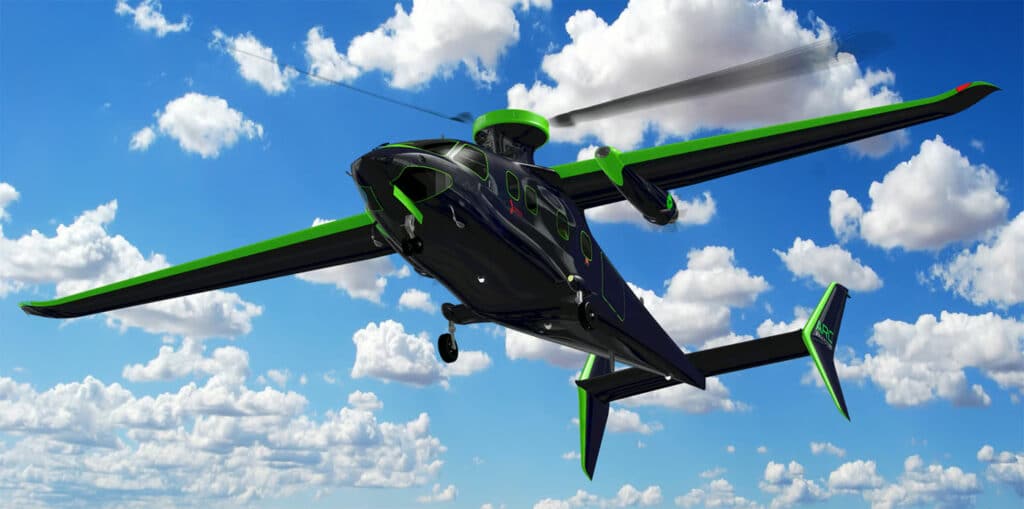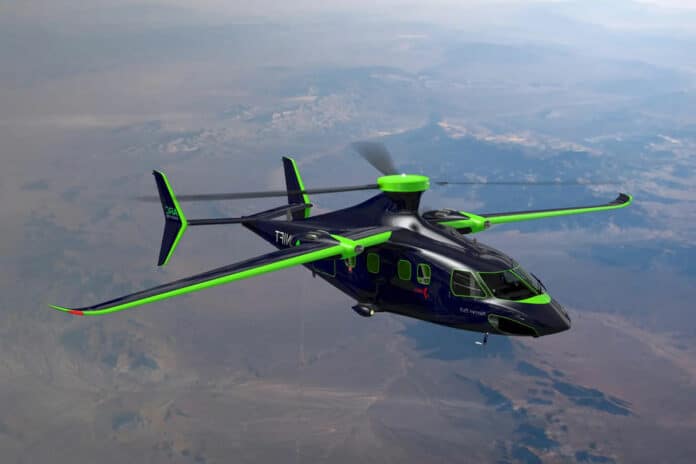As the population continues to grow, sustainable and efficient transportation has become a key focus point around the world. This has led to a shift in perspective towards addressing these challenges, including reducing urban traffic, improving safety and reliability, and shifting away from fossil fuels.
In response to these requirements, ARC Aerosystems, a UK-based technology startup revolutionizing air travel, has designed a new sustainable passenger aircraft. The ARC Linx P9 billed as the “world’s most advanced nine-seater aircraft with vertical take-off and landing (VTOL) capability,” was unveiled at the Air finance Journal event in Dublin.
Designed as a cost-effective, low-carbon solution to intercity travel, the Linx P9 has the flexibility of a helicopter, with the performance of a fixed-wing utility aircraft. The aircraft can perform a jump take-off and no-roll landing without the need for a runway, making it a highly versatile passenger and cargo craft fit for a wide range of applications.

The Linx P9 is a full-composite structure aircraft with two variants of Hybrid Electric and twin turbo-prop power trains, both running on Sustainable Aviation Fuel (SAF) or even hydrogen in the future. It is unpressurized and equipped with the retractable tricycle landing gear.
The Linx’s single rotor is essentially un-powered (apart from the electric spin-up motor, used only prior to take-off), and the corrosion-proof composite airframe will be a light and low drag. The aircraft is 11.6 meters (38.1 ft) long and has a wingspan of 12.6 meters (41.3 ft). With a composite airframe, the lightweight vessel will be able to reach a maximum speed of 200 knots (370 km/h) at full tilt or cruise at 162 knots (300 km/h). It can also fly up to 13,000 feet and deliver a 512 nautical miles (950 km) range in a standard configuration or a 702 nm (1,300 km) range with an extended-range tank fitted.
The Linx’s nine-passenger cabin roughly doubles the payload of typical leading eVTOL air taxis and also compares well to the similar-sized AW109 helicopter, which carries 6 in the cabin and a 7th sitting next to the pilot. The Linx has a far less complex drivetrain than a helicopter, which will reportedly reduce the overall maintenance costs.
The company claims its VTOL aircraft offers a 40% more cost-effective alternative to traditional helicopters (based on the DARPA model) and a 30% increased range compared to similar-size helicopters (based on the Roskam method).
“It’s a very exciting design concept that is the ultimate solution for the market, that is affordable, safe and practical, whilst providing the right answer to the current environmental concerns,” ARC’s CEO, Seyed Mohseni, said.
Arc says you can operate this machine for around $505 per flight hour. The new ARC Linx P9 could enter service as soon as 2028.
